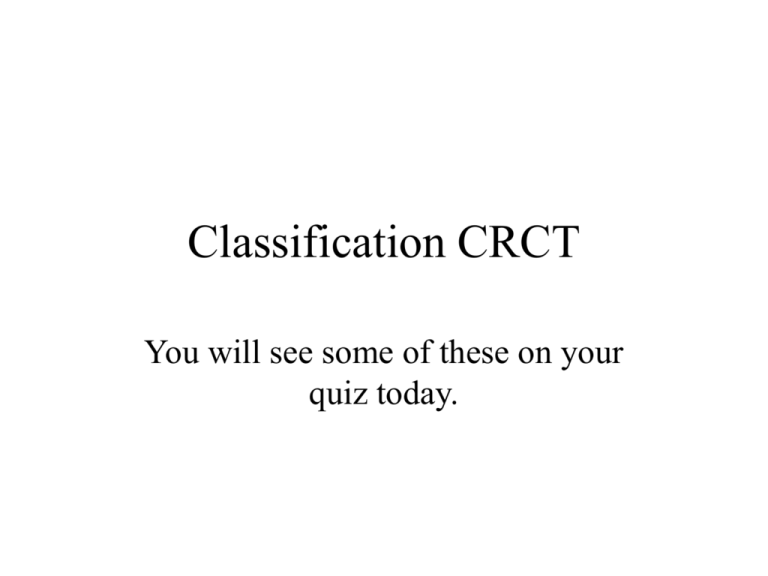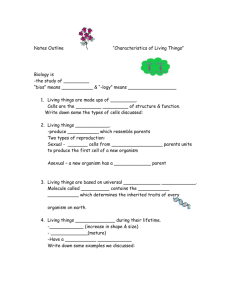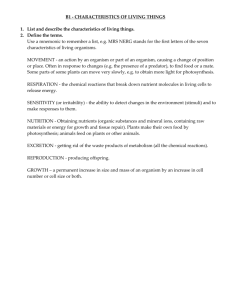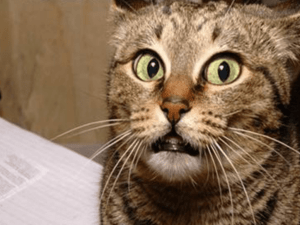A dichotomous key on Virginia plant species
advertisement

Classification CRCT You will see some of these on your quiz today. This is a unicellular, eukaryote found in pond water is most likely in which kingdom? A. Eubacteria B. Fungi C. Protist D. Archaebacteria C. The Protist Kingdom You collect an organism from a boiling hot spring and find it has no cell nucleus. The organism is most likely apart of which kingdom? a) Eubacteria b) Protista d) Archaebacteria c) Fungi d) Archaebacteria Which of the following is NOT a characteristic of all living things A) The ability to maintain a stable internal environment B) The ability to obtain and use energy C) Made up of one or more cells D) Ability to move to obtain food This unicellular organism is reproducing asexually by what method? a) Fragmentation b) binary fission c) budding d) sexually b) Binary Fission How does the organism pictured above obtain energy? a. It coverts carbon dioxide and water into food. b. It uses sunlight to make its own food. c. It converts minerals in the soil into food. d. It consumes and recycles dead organisms and wastes in soil. d. It consumes and recycles dead organisms and wastes in soil. 6. All of the following kingdoms contain organisms with cell walls except a. Kingdom Fungi b. Kingdom Archaebacteria c. Kingdom Plantae d. Kingdom Animalia d. Kingdom Animalia A biology class in Virginia conducted a survey of the plant species found on their school grounds. They found several plants that they didn’t recognize. What resources would be most helpful to the class in identifying the plants species? a) b) c) d) A book about Virginia plant adaptations A biology book A dichotomous key on Virginia plant species Local Home and Garden Newspaper Articles. A biology class in Virginia conducted a survey of the plant species found on their school grounds. They found several plants that they didn’t recognize. What resources would be most helpful to the class in identifying the plants species? a) A book about Virginia plant adaptations b) A biology book c) A dichotomous key on Virginia plant species d) Local Home and Garden Newspaper Articles. Which of the following is NOT true of the fungi kingdom? a) b) c) d) They are heterotrophs They are important decomposers They are all multicellular They have a cell wall Which of the following is NOT true of the fungi kingdom? a) b) c) d) They are heterotrophs They are important decomposers They are all multicellular They have a cell wall a) b) c) d) Which of the following might reproduce asexually by binary fission? E-coli Sea Star Hydra None of these a) b) c) d) Which of the following might reproduce asexually by binary fission? E-coli Sea Star Hydra None of these 1. Which question below would be MOST useful when developing a dichotomous key to classify the animals seen here? A. Does the animal have large ears? B. Does the animal have tusks? C. Does the animal have a trunk? D. Does the animal have thick skin? 1. Which question below would be MOST useful when developing a dichotomous key to classify the animals seen here? A. Does the animal have large ears? B. Does the animal have tusks? C. Does the animal have a trunk? D. Does the animal have thick skin? The scientific name for the emperor penguin is Aptenodytes forsteri. From this name we can conclude that a. This penguin lives in a cold environment b. This organism is native to North America c. This penguin belongs in the genus Aptendytes d. All of the above The scientific name for the emperor penguin is Aptenodytes forsteri. From this name we can conclude that a. This penguin lives in a cold environment b. This organism is native to North America c. This penguin belongs in the genus Aptendytes d. All of the above A dichotomous key can be used to determine a. The scientific name of an organism b. Where an organism’s natural habitat is c. How an organism interacts with other species d. What an organism feeds on A dichotomous key can be used to determine a. The scientific name of an organism b. Where an organism’s natural habitat is c. How an organism interacts with other species d. What an organism feeds on 1. Which of the following organisms has offspring exactly like itself? A B A. B. C. D. A B C B and C C 1. Which of the following organisms has offspring exactly like itself? A B A. B. C. D. A B C B and C C








